After several weeks of not flying, I had finally found the time and energy to unlimber the Debonair and get some air under its wings. I was out doing some basic maneuvers and just letting the airplane exercise itself before heading off to a nearby non-towered field for some landings and cheap fuel. I had the power pulled way back and was just enjoying a cloudless day over southwest Florida. Soon, I decided to head off to one of the area’s non-towered airports—call it Alpha Municipal—for the fuel, pointed the airplane in that direction and put its CTAF in the #1 comm radio.
Alpha Municipal’s CTAF was busy—I was not the only one out this fine morning—with at least three voices announcing their position and intentions. I was still about 30 miles out, listening to the conversations and dreading the line for the self-serve fuel pump. Normally, a busy CTAF doesn’t scare me when everyone seems to know what they’re doing, but what I heard next did set off some alarms.
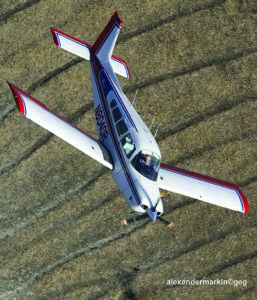
Mr. Skylane actually had one part of pattern operations correct: While the direction of turn isn’t advisory, how you enter the traffic pattern is. But a lot of that depends on altitude. Perhaps the riskiest way to join a traffic pattern is to descend into it.
According to the FAA advisory circular on Non-Towered Airport Flight Operations (AC 90-66B), “Descending into the traffic pattern can be dangerous, as one aircraft could descend on top of another aircraft already in the pattern. All similar types of aircraft, including those entering on the 45 degree angle to downwind, should be at the same pattern altitude so that it is easier to visually acquire any traffic in the pattern.”
Additional advice from the AC includes:
- “Arriving aircraft should be at traffic pattern altitude and allow for sufficient time to view the entire traffic pattern before entering.” We like to be about 500 feet above the pattern altitude by five miles out, and at it by 2.5 miles out.
- “Entry to the downwind leg should be at a 45-degree angle abeam the midpoint of the runway to be used for landing.”
- “The pilot may use discretion to choose an alternate type of entry, especially when intending to cross over midfield, based upon the traffic and communication at the time of arrival.”
CLOSE ENCOUNTER
A male voice identifying as a Skylane called on the CTAF about five miles out from that airport, stating his plan to enter the right downwind for the runway in use. The only problem was that airport doesn’t have a runway for which right traffic is designated; all the local traffic is supposed to turn left. Perhaps presuming he made a simple left/right mistake all of us at one time or another have made, and giving Mr. Skylane the benefit of the doubt, no one pointed out his error.
After he again transmitted he was making right traffic, someone finally did pipe up, remarking that the traffic pattern at Alpha Municipal required left turns. The Skylane pilot’s response was basically, “Whatever; it’s all advisory, anyway,” and he said he would continue to make right traffic. A few moments later, there was another voice, emphatically stating he just had a way-too-close encounter with the Skylane in the pattern. He was not happy.
By this time, I was completely over the idea of going to Alpha Municipal for landings and fuel, and turned toward a different nearby facility—call it Bravo Municipal. I was still motoring along rather slowly, enjoying the day, as I switched to Bravo Municipal’s CTAF. It was much quieter—probably because its posted fuel price was higher.
As I neared my new destination, I maneuvered to enter the left downwind on the 45. About that time—you guessed it—Mr. Skylane announced on Bravo Municipal’s CTAF that he was a few miles out for “Alpha Municipal” and would be making left traffic for Runway 6. Knowing that no other airport in the area had a Runway 6 and shared the same CTAF—and having an already-low opinion of this guy’s situational awareness—I transmitted my position, which by this time was left downwind at Bravo Municipal for Runway 6. The Skylane pilot responded that he was a couple of miles out for the downwind to Alpha Municipal’s Runway 6.
I asked, “Are you sure you’re at Alpha and not Bravo?” He came right back with something like, “No; I’m about to enter the left downwind for Runway 6 at Alpha.” I responded, “Well, okay, but Alpha doesn’t have a Runway 6.” That finally seemed to get through to him, and shortly afterward he transmitted as he was joining the left downwind for Runway 6 at Bravo Municipal. We briefly confirmed I was #1 for the airport and that was pretty much the end of the event. But it obviously raises a few thoughts.
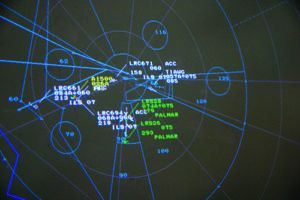
Defensive flying can also involve ATC. I’ve been cleared for takeoff at a Class B airport only to look up the final approach path to see a Piper Seminole glide to a landing right through the spot I would have been if I hadn’t looked. Another time, ATC cleared me in pretty much the direction opposite my destination. When queried, the controller confessed he had confused my filed destination with one in his airspace bearing a similar identifier.
The point isn’t that ATC makes mistakes; we all do. The trick is to catch it when it occurs and work it out with the controller before complying with the clearance. Trust, but verify.
NOT ADVISORY
First of all, the direction in which we turn when flying a traffic pattern is not advisory, at least in the U.S. The FAA’s FAR 91.126, “Operating on or in the vicinity of an airport in Class G airspace,” couldn’t be clearer: “When approaching to land at an airport without an operating control tower in Class G airspace…Each pilot of an airplane must make all turns of that airplane to the left unless the airport displays approved light signals or visual markings indicating that turns should be made to the right, in which case the pilot must make all turns to the right.”
Meanwhile, if you think, “Ha! I’m at an airport in Class E airspace! Take that!” you should review FAR 91.127, “Operating on or in the vicinity of an airport in Class E airspace.” It states, “Unless otherwise required [or authorized by the ATC facility with jurisdiction], each person operating an aircraft on or in the vicinity of an airport in a Class E airspace area must comply with the requirements of §91.126.” Game, set and match, folks.
Of course, when operating at Class B, C or D airports, you’re expected to follow ATC instructions, and you should be prepared to fly either a right or left pattern, join the pattern on an extended downwind or from an extended base leg, and generally do whatever else ATC wants, if you can. If you can’t, say so. That’s not to ignore that some aspects of what the FAA says about traffic pattern operations at non-towered airports are, indeed, advisory. For a refresher, see the Aeronautical Information Manual (AIM) and its discussion of airport operations, starting at paragraph 4-3-1. An additional reference is Advisory Circular AC 90-66B, “Non-Towered Airport Flight Operations,” which supplements the AIM.
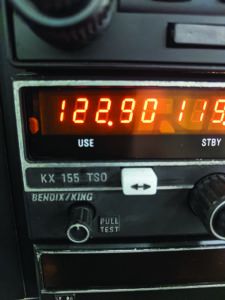
The FAA advisory circular on Non-Towered Airport Flight Operations (AC 90-66B) cited in the sidebar on the previous page is an excellent overall reference on the subject. One portion includes a list of “best practices,” summarized below.
Traffic within 10 miles of a non-towered airport should monitor and communicate, as appropriate, on the designated CTAF until leaving the area.
Any traffic capable of radio communications should reply to your self-announcements without being prompted.
When inbound, self-announce your position and intentions at between 10 and eight miles from the airport.
Departing aircraft should monitor/communicate on the appropriate frequency from startup, during taxi and until 10 miles from the airport unless required otherwise.
Pilots are reminded that the use of the phrase, “ANY TRAFFIC IN THE AREA, PLEASE ADVISE,” is not recognized and should not be used under any condition. (emphasis added)
PRESUMPTIONS
But the larger issue is that we can’t presume anything, especially at non-towered airports. We can’t expect everyone to be following the rules, or even know what the rules are. (And we can’t even expect the other pilot to know at which airport he—and it’s always a he—is attempting to land.) Put another way, we have to fly defensively.
Another recent flight I made illustrates how defensive flying pays off even when everyone is following the rules and (mostly) paying attention. In one instance, I was scooting past a sea-level non-towered airport at 1500 feet msl, well outside its traffic pattern. Such a transition keeps you clear of the pattern, but it also puts you in an area where traffic arriving from and departing into the en route system is climbing and descending.
As I neared the airport, I listened to the local Tracon on one radio as a twin Cessna got an IFR clearance and then, on the radio tuned to the CTAF, announce his takeoff. His stated departure plans basically had him climbing and turning into me from behind. We confirmed we knew where each other was, and I spotted him in his climbing right turn. To ensure separation, I turned 30 degrees back toward the airport, and told him what I was doing, giving him space to climb and get radar-identified with ATC without having to worry about me. I watched him motor off to the north with increasing separation between us, and we both went about our business.
Later, on my way to another local airport for some landings, the traffic display alerted me to a slow-moving aircraft a few miles ahead and 300 feet above my 1600 feet msl altitude. I was transiting a large area popular with local flight schools, and the “target” exhibited all the signs of doing basic maneuvers. I know when I’m doing basic maneuvers, looking for traffic doesn’t get the attention it should, so I again changed my heading by about 30 degrees to increase our separation. Knowing where to look, I spotted the airplane just above the horizon as I motored past it two miles away.
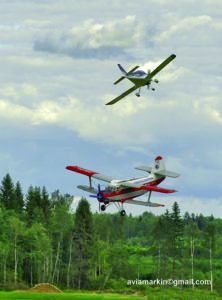
Another worthwhile recommendation from the advisory circular on Non-Towered Airport Flight Operations (AC 90-66B) is to keep disagreements and arguments off the CTAF. Some examples can include:
• Do not correct other pilots on frequency (unless it is safety critical), particularly if you are aware you are correcting a student pilot.
• If you disagree with what another pilot is doing, operate your aircraft safely, communicate as necessary, clarify their intentions and, if you feel you must discuss operations with another pilot, wait until you both are on the ground.
• Keep in mind that while you are communicating, you may block transmissions from other aircraft.
• An aircraft might be using a runway different from the one favoring the prevailing winds, e.g., for crosswind practice. The best option is to simply point out the current winds to the other pilot and indicate which runway you plan on using.
DON’T DO ANYTHING STUPID
While in cruise on a night flight some years ago, I spotted slower traffic ahead, slightly above and to my right. As I overtook the traffic, I maintained my heading and altitude to slide past to its left and below. Of course, that wasn’t the smartest thing I’ve ever done, if for no other reason than anything could have happened if the other pilot decided to turn at the wrong time. I should have maneuvered for greater separation, but I didn’t.
I also didn’t overtake the airplane on its right, as right-of-way rules dictate. I rationalized my decision at the time by noting it’s hard to judge distance at night and, instead of successfully transitioning to its right side, we could have collided. We also weren’t at the same altitude, though I don’t think we were 500 feet apart vertically.
Think about where the other guy is, what his intentions are and where he’s going to be next. If everyone in a pattern is giving position and intention reports, it’s easy. If someone called in 10 miles out five minutes ago and you haven’t heard anything since, ask.
And cut some slack for the obviously inexperienced pilot. Someone narrating his or her every move in the pattern probably is doing so because they’re new at this and aren’t sure they’re getting it right. You were that pilot once.
Finally, any time we’re in VFR weather, there’s liable to be traffic nearby. Even when IFR or receiving VFR advisories, ATC won’t call all traffic you might see, probably for workload reasons.
Always plan for the other guy to do something wrong, probably right in front of you. Always presume the other guy isn’t as prepared, as well-trained or as experienced as you. Always listen to the frequency, and don’t presume the other guy simply misspoke about his location or intentions. When you wind up nose-to-nose with Mr. Skylane as you turn final, somebody’s in the wrong spot. Don’t let it be you.

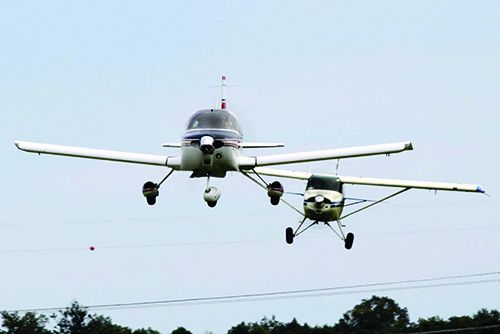



DEFENSIVE FLYING. Even in an ATC environment you should be ready for the instructions to not be followed. I was in the pattern and decided to do a couple of touch and goes before the full stop. Tower cleared me for the request and told a Cirrus to hold for landing traffic. There was something impatient in the Cirrus pilot’s voice or some 6th sense pilot thing which told me not to trust him. I did the T&G and was on climb out. I heard the tower clear the Cirrus for take-off, “follow the preceding traffic who is in a closed pattern. I started to turn cross wind and told my wife, also a pilot, watch him I think he is going to try to cut us off. I turned downwind and was at pattern altitude when the Cirrus appeared climbing into view at my 1 o’clock position. I pulled power and started evasive maneuvers by this time we were within 50 feet of each other. The tower was yelling at him and he did not respond but just kept going. I requested the tower file a PD report on him. Had I not been alert to his seeming impatience and expected him to follow the ATC instructions it could have ended with multiple fatalities.